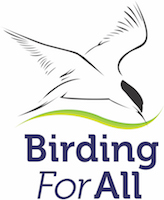GOB 90 – Snap Happy Birders
The photo revolution took off when we no longer needed to buy film. When I was given my birthday ‘box brownie’ it took me about two months to use up the first film. 1960’s Eleven-year-olds didn’t take many snaps; when developing the film cost nearly as much as the camera I was never going to be prolific. I remember seeing a wedding photographer with his auto-wind going full blast and thinking he must be really earning it to go through film that fast.
Nowadays the average eleven-year-old takes more pictures in a week than I did in my first year. But like fashion, most shots are ephemera, discarded seconds after they are taken. The rest stack up on iPhones only to be lost forever when the kid gets mugged.
When I started birding only pros took photographs of birds… needing a lot of patience, a hide and a mortgage-financed long lens. Sometime during the last decade birding seems to have become more a photoshoot, with every man and his dog carrying a telephoto lens and digi-scopers using their smart phones. Forums, blogs and mailing groups abound with bird photographs ranging from the breath-taking to the frankly risible. Many seem to have forgotten that high tech and a steady hand may give a crisp image, but doesn’t turn you into an artist.
However, sometimes just having the means to take a photograph turns people into birding paparazzi of the worst kind. Our celebrities are the scarce or vagrant birds migrating in the wrong direction or blown here by a storm. They now get hounded from bush to bush like a drunken starlet in a low-cut gown.
This indefensible behaviour occasionally hits the headlines or even results in unpleasant confrontations, but that’s not the worst of it. Unfortunately, such vagrant birds are probably not destined to live long and most will never home.
What bothers me, greatly and increasingly is that fieldcraft is disappearing along with courtesy and common sense. Everyday birds get pushed off their perches by camera-toting birders. In breeding season I fear for the cuckoos and turtledoves that attract this new breed of shooters.
Last year I watched a camera-toting ignoramus walk the length of a chained-off path to take pictures of a bearded tit. I say ignoramus as he was blissfully unaware that what he was doing was not only bad form but illegal. The path was there for reedbed maintenance not public access and, anyway, such birds are always off limits – disturbing them is more than foolish its birding folly.
I’ve often been asked by non-birders if I take photos. Would they ask golfers if they take photos of golf balls down a hole? Photography is a completely separate activity. Moreover, we need law to enforce the country code, and a ban on cameras in breeding season.
Most birders, who take up photography wouldn’t dream of doing anything to harm a bird, but photographers who take pictures of birds seem unaware of the harm they can do. I recently drove a mile-long reserve entrance track with regular signs telling people to use the car as a hide and stay in their vehicle.
My reward was five short-eared owls hunting together, until two other cars pulled up. One lady hopped out of her car and lent over the roof to take a picture. The other idiot leapt out of his car pulling up the tailgate to get his long lens out. Of course, by the time they were ready the birds had flown and a staff member appeared to tick them off.
Hear the Podcast:





